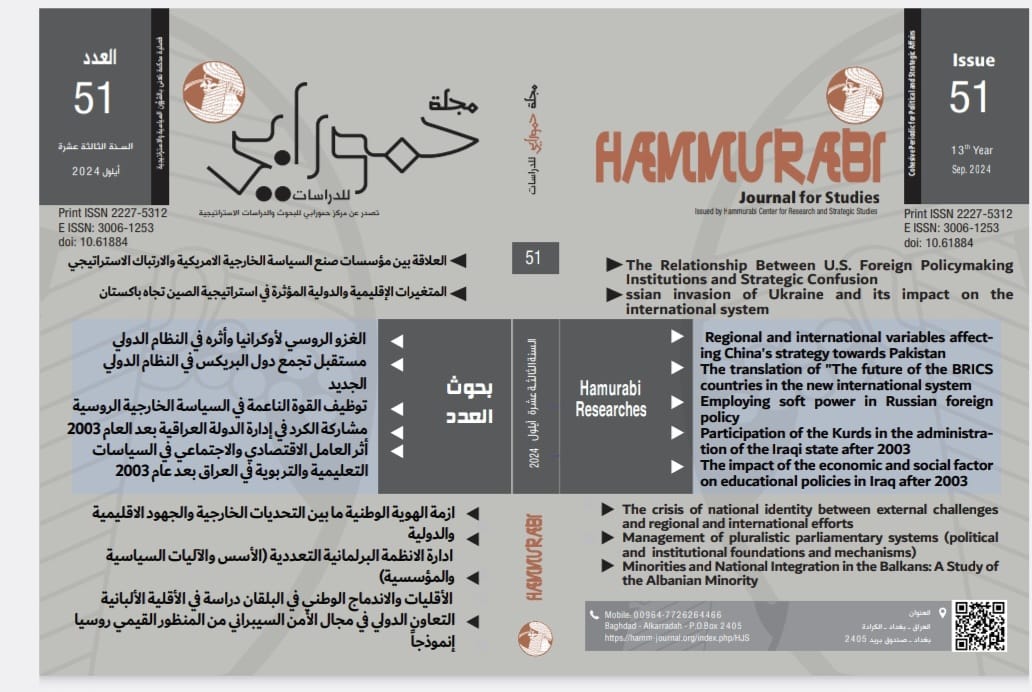The translation of "The future of the BRICS countries in the new international system
DOI:
https://doi.org/10.61884/hjs.v13i51.525Abstract
Since the beginning of the third millennium, the international system has been in constant flux, witnessing political transformations around the world. With no stable international system and global economic crises looming on the horizon, countries rise and fall, systems collapse, groups form and systems disintegrate. For these reasons and others, the international system is moving towards building new alliances and modern poles.
"A few years ago, an international economic alliance called the BRICS was formed, consisting of Brazil, Russia, India, and China. South Africa later joined the group. This alliance was built on economic foundations with a focus on maintaining global security and peace as well as combating poverty."
With the political dominance of the United States in global financial and monetary institutions, it was reasonable for major economic and political powers like the BRICS countries to consider attempting to break free from economic dependence on the US. Contributing to this international shift was Europe's failure to form an independent model from the United States and its immersion in economic problems, particularly the sovereign debt crisis. The response to the global financial crisis was one of the driving factors behind the formation of BRICS, with initial ideas focusing on economics, finance, and monetary policy, as well as enhancing regulation of the capitalist system. Gradually, interest expanded into how this alliance would engage with events in the international political environment.
Key Words: : BRICS, Economic institutions, International system, Major Powers.












